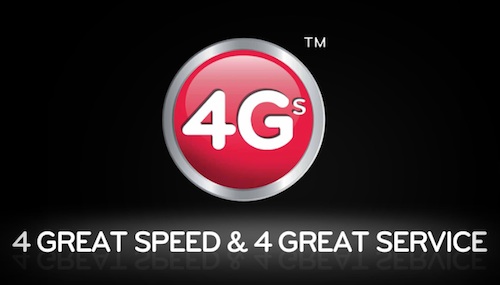
The final appeal committee of the Advertising Standards Authority has dismissed a last attempt by Cell C to have a ruling that the “4Gs” term it used in its advertising was in breach of the authority’s advertising codes overturned. The committee has awarded costs to complainants Vodacom and MTN.
In a decision handed down by the committee’s Mervyn King on Monday, it says the appeal is “dismissed with costs, which shall include the costs of counsel on behalf of Vodacom, taxed on the party-and-party basis as if this matter had been heard in the high court”.
The decision is a blow to Cell C, which had initially claimed it had a fourth-generation (4G) mobile network. It later changed its advertising from “4G” to “4Gs”, claiming the abbreviation stood for “for great speed” and “for great service”.
Network operators in other parts of the world, including the US, have used the term 4G in their marketing, but the committee has nevertheless decided to uphold the authority’s original decision.
Last year, the authority received complaints against Cell C from rivals Vodacom and MTN as well as from members of the public — from a P van Wyk and an N Mahomed. The authority’s directorate found the use of the “4Gs” term was misleading and was used without substantiation.
MTN argued that the “hypothetical, reasonable reader or viewer” would understand the logo to mean the 4G standard, an advance of the well-known 3G standard. It said the International Telecommunication Union (ITU) had not defined the standard. Vodacom put forward a similar argument. Both operators also objected to a Cell C advertisement in which it claimed it was “building a 4G network that is apparently the most advanced in the southern hemisphere” and that it was “building the first 4G network in the southern hemisphere”.
In response, Cell C said various mobile operators in other countries were using the term “4G” in their promotional materials. It also said there was no basis for the inference that its use of the “4Gs” logo effectively amounted to a claim that it had a 4G network.
However, the authority found that the “4Gs” logo was ambiguous and therefore misleading as defined in its advertising code of conduct.
In October last year, Cell C appealed against the authority’s ruling that the logo was misleading. It argued at the Advertising Industry Tribunal that the public would not be misled into understanding that a 4G network was being advertised. Then, in February this year, it supplemented its appeal submissions by attaching a press release issued by the ITU on 6 December 2010 “some three months after the complaints were filed”.
The final appeal committee says it is “clear that none of the complainants had knowledge of the contents of the ITU press release” at the time they lodged their objections with the authority.
The ITU release stated that technologies known as “LTE-Advanced” and “Wireless MAN-Advanced” could be considered to be 4G. However, it said the term, though undefined, “may also be applied to the forerunners of these technologies, LTE and WiMax, and to other evolved 3G technologies providing a substantial level of improvement in performance and capabilities with respect to the initial 3G systems now deployed”.
Cell C argued that this extended to its network, which is based on evolved high-speed packet access technology known as HSPA+.
However, ITU spokesman Sandre Acharya said in an e-mail exchange with the advertising authority that the union “does not consider HSPA+, being the technology employed by Cell C, as being 4G but being an evolved 3G technology.
The final appeal committee says in Monday’s ruling that Cell C has “not discharged the onus on it to show that the technology employed by it is 4G”.
“The question in this matter is how the 4Gs logo would have been understood in August and September 2010 by the reasonable viewer or reader who is neither hypercritical nor hypersensitive,” the committee says. Referring to the complaints from Mahomed and Van Wyk, it says that “at best for Cell C”, the 4Gs logo is “ambiguous” and as such is a contravention of the advertising code.
“In all the circumstances the [Cell C] appeal must fail,” it says. — Duncan McLeod, TechCentral
- Subscribe to our free daily newsletter
- Follow us on Twitter or on Facebook




